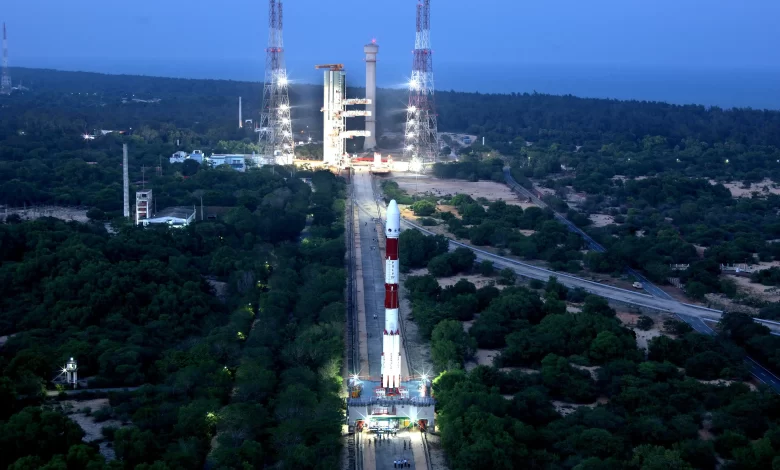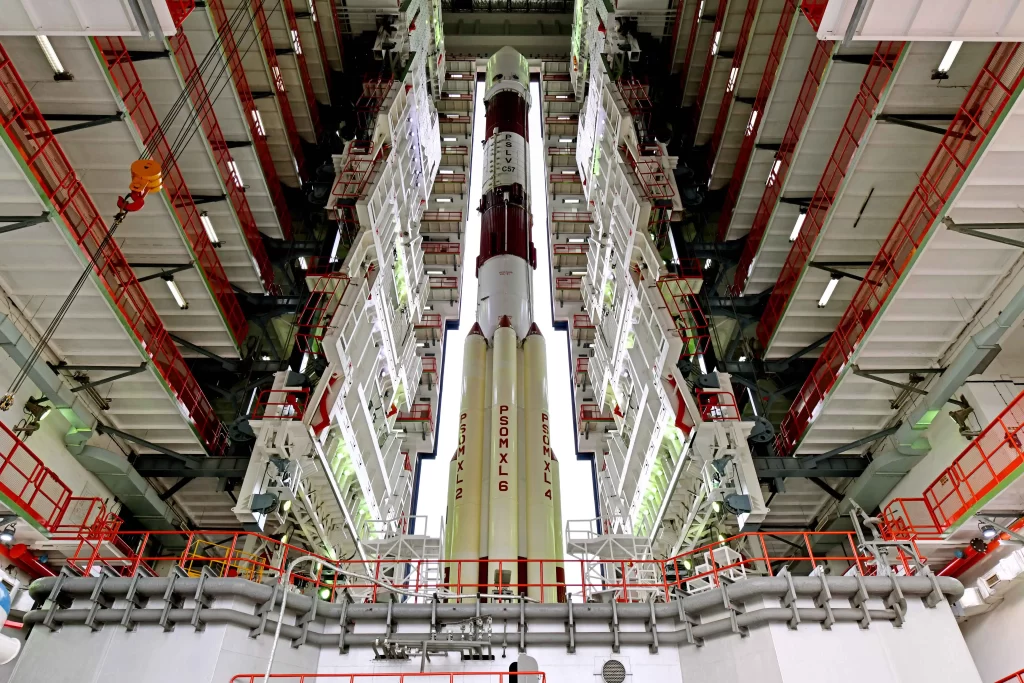India’s Aditya-L1 Solar Observatory Successfully Launched, Set to Study the Sun from Unique Vantage Point
Aditya L1 Mission Marks a Milestone in Indian Space Research

New Delhi, September 4, 2023 – India’s space research agency, ISRO, achieved a significant milestone with the successful launch of the Aditya-L1 solar observatory. This pioneering mission, launched aboard the PSLV-C57 vehicle, is India’s first space-based endeavor to study the Sun. The spacecraft has been placed into a precise halo orbit around the Lagrange point 1 (L1) of the Sun-Earth system, approximately 1.5 million kilometers from Earth.
The Aditya-L1 mission is poised to revolutionize our understanding of the Sun and its impact on space weather by offering continuous, unobstructed views of our star. The spacecraft carries seven advanced payloads designed to observe various aspects of the Sun, from the photosphere and chromosphere to the outermost layers of the corona. This comprehensive suite of instruments includes both remote sensing and in-situ measurement devices.
Successful Launch and Solar Observatory Placement
The Aditya-L1 mission began its journey on September 2, 2023, with a flawless launch carried out by the PSLV-C57. The satellite’s precise placement into its intended orbit marks a significant accomplishment, ensuring the observatory’s ability to study the Sun without any interruptions or eclipses.
Unlocking Solar Mysteries
Aditya-L1’s scientific objectives are multifaceted, encompassing a wide range of solar phenomena and space weather-related studies. Some of the primary scientific goals include:
- Solar Atmospheric Dynamics: Investigating the dynamics of the solar upper atmosphere, including the chromosphere and corona.
- Coronal Heating and Mass Ejections: Exploring the physics of coronal heating, the initiation of coronal mass ejections (CMEs), and the behavior of partially ionized plasma.
- Particle Dynamics: Observing the in-situ particle and plasma environment to better understand particle dynamics originating from the Sun.
- Corona and Heating Mechanism: Studying the physics of the solar corona and its heating mechanisms.
- Plasma Diagnostics: Measuring temperature, velocity, and density in the coronal and coronal loop plasma.
- CMEs and Solar Eruptive Events: Investigating the development, dynamics, and origins of CMEs, as well as the processes leading to solar eruptive events.
- Magnetic Field Measurements: Exploring the magnetic field topology and measurements in the solar corona, crucial for understanding space weather drivers.
Advanced Payloads for Solar Observation
Aditya-L1 is equipped with seven advanced payloads, each with specific capabilities for scientific investigation:
Remote Sensing Payloads:
- Visible Emission Line Coronagraph (VELC): Provides corona imaging and spectroscopy.
- Solar Ultraviolet Imaging Telescope (SUIT): Offers imaging of the photosphere and chromosphere in both narrow and broadband.
- Solar Low Energy X-ray Spectrometer (SoLEXS): Performs soft X-ray spectroscopy for Sun-as-a-star observation.
- High Energy L1 Orbiting X-ray Spectrometer (HEL1OS): Conducts hard X-ray spectroscopy for Sun-as-a-star observation.
In-situ Payloads: 5. Aditya Solar Wind Particle Experiment (ASPEX): Analyzes solar wind particles, including protons and heavier ions, with directional capabilities.
- Plasma Analyser Package For Aditya (PAPA): Examines solar wind particles, including electrons and heavier ions, with directional capabilities.
- Advanced Tri-axial High Resolution Digital Magnetometers: Measures magnetic fields in high resolution.
The Aditya-L1 mission is poised to provide crucial insights into the Sun’s behavior and its influence on space weather, enhancing our understanding of these complex phenomena. This ambitious venture represents India’s dedication to advancing space research and scientific exploration on a global scale.





